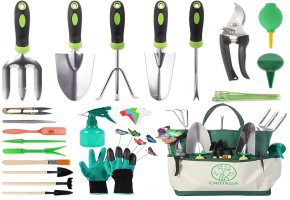- As fiery obstacles loom, can our daring fowl navigate the challenges presented in the thrilling chicken road game?
- Understanding the Mechanics of the Chicken Road Game
- The Importance of Timing in the Game
- Strategies for Success in the Chicken Road Game
- The Role of Risk Assessment
- Maintaining Focus During Gameplay
- The Psychology of Risk and Reward
- Exploring Variations of the Chicken Road Game
- The Rising Popularity of Multiplayer Modes
- Tips for Maximizing Enjoyment
- Choosing the Right Environment for Gameplay
As fiery obstacles loom, can our daring fowl navigate the challenges presented in the thrilling chicken road game?
The chicken road game has gained significant popularity in the realm of online gaming, captivating players with its unique blend of skill and luck. Players take on the role of a chicken attempting to traverse a perilous road filled with fiery ovens. The objective is simple yet thrilling: hop from one oven to another while avoiding getting roasted. Each successive oven increases the stakes, enhancing the game’s excitement and the potential rewards. This combines elements of strategy, timing, and risk assessment, making it highly engaging for participants.
The game presents an elaborate setup where players must assess their capabilities and the dangers ahead. It becomes increasingly challenging as the obstacles evolve, presenting numerous decision points. Players must choose wisely when to leap for the next oven, as the wrong move could lead to instant defeat. The mechanics behind the game are straightforward, but mastering them requires practice and a keen sense of timing, providing players with a satisfying sense of accomplishment.
This article will delve into the intricacies of the chicken road game, exploring its mechanics, strategies for success, and the thrilling elements that make it a favorite among gamers. We will also look into variations of the game and tips for maximizing enjoyment. Get ready to learn everything there is to know about this exciting experience that keeps players at the edge of their seats!
Understanding the Mechanics of the Chicken Road Game
The mechanics of the chicken road game are fundamental to the player experience. It all begins with the exciting premise of guiding the chicken through a series of fiery ovens. As players start, they quickly learn the importance of timing in each jump. You must read the patterns of the flames and ovens, anticipating when to make your move. The leap needs to be perfectly timed to land on the next oven, ensuring the chicken’s safety and progress.
A critical aspect that adds depth to the game is the increasing difficulty as you advance. Initially, the ovens might be spaced comfortably, but they quickly transform into daunting gaps where the timing must be precise. Players can become easily overwhelmed by the rapid changes, which is where strategy comes into play. Moreover, each successful jump multiplies your stakes, offering potential rewards that can be enticing.
| 1 | 3 | x1 |
| 2 | 5 | x2 |
| 3 | 7 | x3 |
The Importance of Timing in the Game
In the chicken road game, timing is not just essential; it’s the very essence of success. Players must develop their ability to gauge the rhythm of the flames and foresee the best moments to leap. Failing to comprehend the timing can lead to costly mistakes, where a poorly timed jump results in being roasted. This added element of suspense keeps players engaged and encourages them to improve their timing skills with every attempt.
To master timing, players should consider practicing in less risky scenarios, gradually increasing the stakes. Observing the flame patterns will assist in developing instincts for when to jump. Many players find it helpful to play in short sessions to refine their techniques without becoming overwhelmed.
Strategies for Success in the Chicken Road Game
To thrive in the chicken road game, players must cultivate a strategy that suits their individual style. One popular approach is to focus on maximizing each jump’s potential return. This involves recognizing when to push forward for the next oven or when to play it safe. Understanding your limits while pushing them is pivotal, as each jump carries unique risks.
Moreover, players often debate the merits of aggressive versus conservative strategies. An aggressive player may aim high stakes with each jump, chasing substantial multipliers. In contrast, conservative players might opt to secure smaller wins, gradually building up their rewards. Finding a balance between these two extremes can lead to sustainable success.
- Practice timing jumps meticulously.
- Engage with both aggressive and conservative strategies.
- Analyzing opponent patterns can provide advantages.
The Role of Risk Assessment
Risk assessment is at the heart of the chicken road game. As players progress, they must continually evaluate their decisions based on the current state. The decision to leap for the next oven is never straightforward—players must consider the growing intensity of the flames, their current score, and the potential rewards. This sense of risk versus reward adds an extra layer of excitement.
Each player’s approach to risk varies, and introspection is necessary to refine one’s instincts. Some players may find success in calculated, lower-risk jumps, while others find thrill in high-stakes leaps. Overall, an astute sense of risk assessment is crucial for long-term success in the game.
Maintaining Focus During Gameplay
With the intensity of the chicken road game, maintaining focus is vital for success. Distractions can lead to missed jumps or poor timing, ultimately ending the game prematurely. Players are often encouraged to create ideal environments for gameplay, minimizing interruptions and finding a comfortable space where they can focus entirely on the action.
Moreover, the mental aspect of the game should not be overlooked. Engaging in mindfulness techniques can help players remain present, allowing them to react swiftly to changing situations. Gamers often employ deep-breathing exercises or visualization strategies before starting a session, preparing their minds for the challenges that lie ahead.
The Psychology of Risk and Reward
The chicken road game is not just a test of skill; it also explores psychological elements behind risk-taking. Players often find themselves enticed by the prospect of greater rewards with each leap across the fiery ovens. This interplay of fear and excitement fuels player engagement and encourages repeated attempts, producing a cycle of exhilaration.
Understanding the motivations behind these choices can enhance the gaming experience. Players can leverage this psychological insight to drive their decisions, determining the moments when to gamble on a risky leap versus playing conservatively. The thrill comes from navigating these psychological hurdles successfully.
Exploring Variations of the Chicken Road Game
As the popularity of the chicken road game continues to grow, several variations have emerged, each designed to appeal to different player preferences. Some modifications introduce new obstacles, such as moving ovens or bonus power-ups, which alter the dynamics of gameplay. Others focus on thematic changes, enhancing the narrative or artistic presentation in a unique manner.
Each variation maintains the core concept of navigating fiery ovens but offers distinct challenges and rewards. Players are encouraged to explore these different versions to discover which style resonates most with them. The influx of variety helps keep the gameplay fresh, ensuring that players have endless opportunities to engage and test their skills.
- Version 1: Speed Challenge – Complete levels within a given time.
- Version 2: Survival Mode – Last as long as possible against persistent obstacles.
- Version 3: Cooperative Play – Team up with others to achieve shared goals.
The Rising Popularity of Multiplayer Modes
With advancements in technology, many players are increasingly drawn to multiplayer versions of the chicken road game. Collaborative gameplay fosters a sense of community, where players can work together to overcome obstacles. This aspect not only enhances entertainment value but also introduces social elements that can be compelling and addictive.
In multiplayer settings, strategic collaboration becomes crucial. Players must communicate effectively, coordinating their jumps to navigate the ovens successfully. The shared experience results in a heightened level of excitement as players cheer each other on while competing for high scores. Thus, the multiplayer modes exemplify a new era of engagement for the chicken road game.
Tips for Maximizing Enjoyment
To truly enjoy the chicken road game, players should seek ways to enhance their overall experience. First, it’s important to familiarize themselves with the game’s mechanics fully. Understanding what to expect will reduce frustration and maximize fun as you leap across the fiery obstacles.
Additionally, participating in online forums or communities dedicated to the chicken road game allows players to share experiences, tips, and strategies. This communal approach not only solidifies their understanding but also fosters camaraderie and motivation. Engaging with fellow players can elevate the excitement of the game, providing fresh perspectives and techniques to implement.
Choosing the Right Environment for Gameplay
The right environment plays a crucial role in determining the quality of your gaming experience. Seeking a comfortable and distraction-free space will naturally improve focus and gameplay efficiency. Proper lighting and seating arrangements can also enhance comfort levels, contributing to marathon gaming sessions without discomfort.
Setting specific goals for each session will help players to stay motivated while playing the chicken road game. Whether aiming to reach a certain score or accomplish a particular feat, clear goals can instill a sense of purpose, leading to more enjoyable and rewarding experiences.
In conclusion, the chicken road game is an exhilarating blend of skill, strategy, and risks. As players navigate through this fiery adventure, they experience an emotional rollercoaster that keeps them engaged and eager for more. By understanding the game’s mechanics, developing effective strategies, and exploring its variations, players can enhance their enjoyment and mastery. Ultimately, this game continues to captivate audiences, promising endless hours of fun and excitement.




 Round Rugs
Round Rugs  Wool Rugs
Wool Rugs  Vintage Rugs
Vintage Rugs 


 Carpet Tiles
Carpet Tiles  Carpet
Carpet 
 Embossed Rug
Embossed Rug  Plain Rug
Plain Rug 
 2.5'*4'
2.5'*4'  2'*3'
2'*3'  3'*5'
3'*5'  5*7.5
5*7.5 













 Artificial Grass
Artificial Grass  Mats
Mats 
 Soil
Soil  Fertilizer
Fertilizer  Pesticides
Pesticides